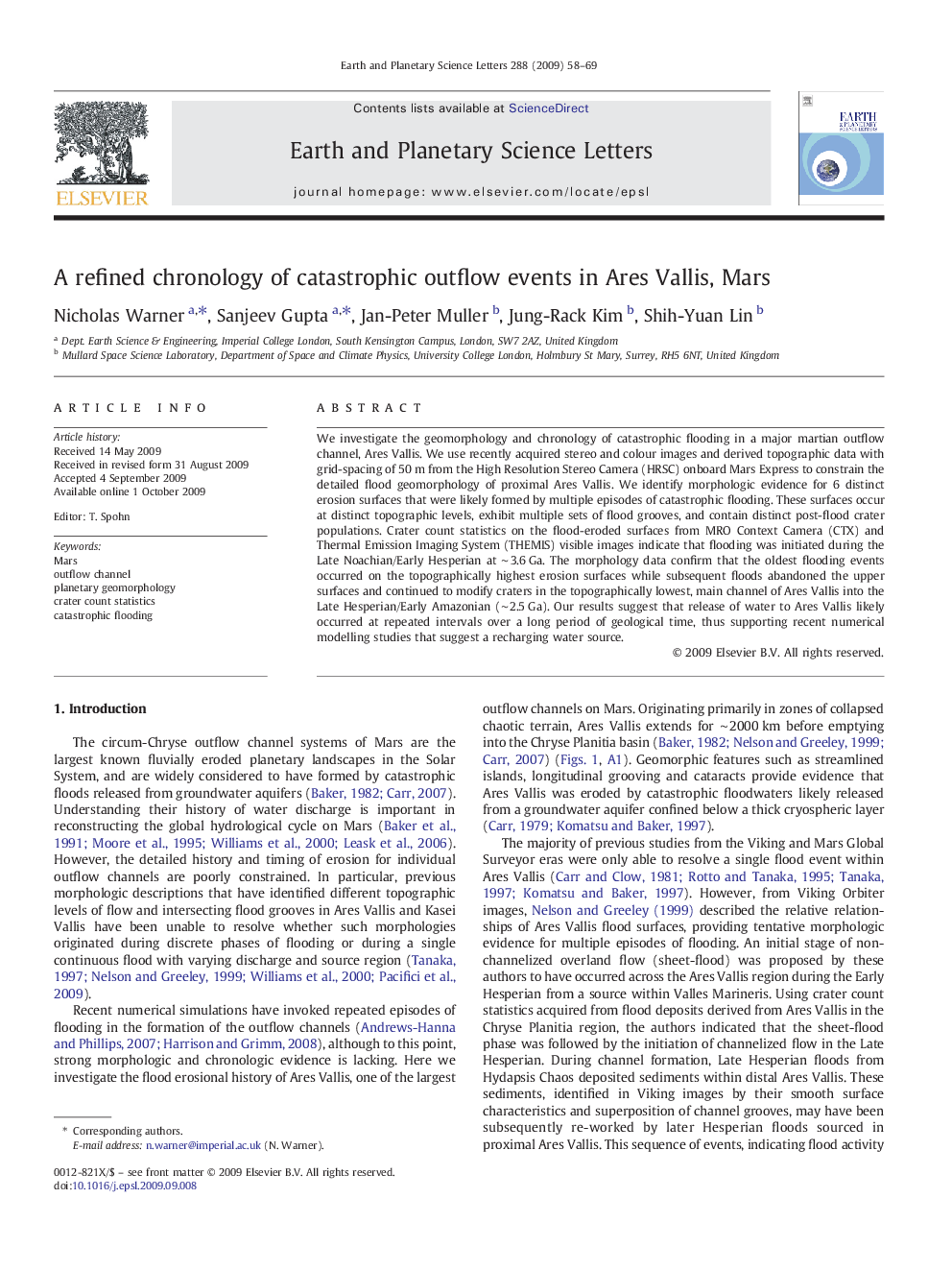| Article ID | Journal | Published Year | Pages | File Type |
|---|---|---|---|---|
| 4678948 | Earth and Planetary Science Letters | 2009 | 12 Pages |
We investigate the geomorphology and chronology of catastrophic flooding in a major martian outflow channel, Ares Vallis. We use recently acquired stereo and colour images and derived topographic data with grid-spacing of 50 m from the High Resolution Stereo Camera (HRSC) onboard Mars Express to constrain the detailed flood geomorphology of proximal Ares Vallis. We identify morphologic evidence for 6 distinct erosion surfaces that were likely formed by multiple episodes of catastrophic flooding. These surfaces occur at distinct topographic levels, exhibit multiple sets of flood grooves, and contain distinct post-flood crater populations. Crater count statistics on the flood-eroded surfaces from MRO Context Camera (CTX) and Thermal Emission Imaging System (THEMIS) visible images indicate that flooding was initiated during the Late Noachian/Early Hesperian at ∼ 3.6 Ga. The morphology data confirm that the oldest flooding events occurred on the topographically highest erosion surfaces while subsequent floods abandoned the upper surfaces and continued to modify craters in the topographically lowest, main channel of Ares Vallis into the Late Hesperian/Early Amazonian (∼ 2.5 Ga). Our results suggest that release of water to Ares Vallis likely occurred at repeated intervals over a long period of geological time, thus supporting recent numerical modelling studies that suggest a recharging water source.
